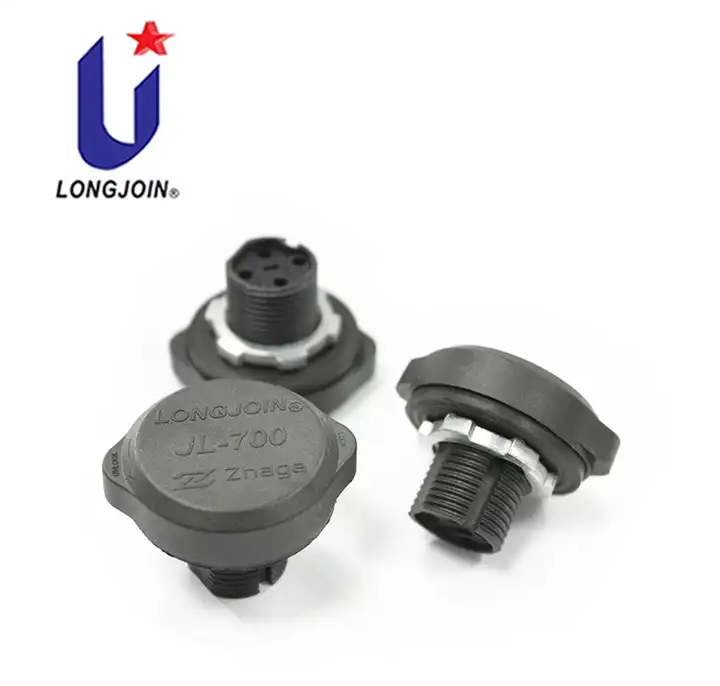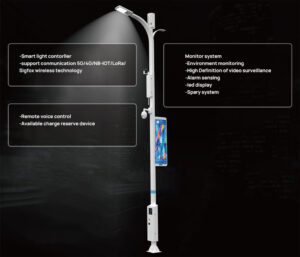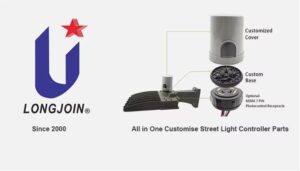Unifying Outdoor Lighting Control with the Zhaga Standard Interface
Introduce
Outdoor lighting systems are rapidly evolving with the development of smart technology. This makes them more efficient and easy to control. A major development in this domain is the Zhaga standard interface. The major aim of this interface is to streamline and unify outdoor light controllers. In this article, we’ll discuss the specifics of the Zhaga standard. This includes its contact ratings, pin configurations, and color codes. Moreover, we’ll also discuss its major advantages and its potential impact on the global lighting industry.
The Zhaga interface is designed with strong contact ratings to enhance its performance. It supports a contact rating of 1.5A at 30V with 24V being the typical operating voltage. These specifications allow the interface to handle a significant amount of current and voltage. This makes sure it meets the needs of various outdoor lighting applications.
Another major feature of the Zhaga interface is its support for hot swapping. Hot swapping is the ability to connect or disconnect components without turning off the power supply. This is helpful in outdoor lighting systems as it simplifies maintenance and repairs. Technicians can easily replace or upgrade light controllers without disrupting the power supply. This reduces break time and increases safety. Hot swap also ensures the lights work during maintenance. This makes sure that there is no disruption in service and inconvenience to users.
The Zhaga interface uses a four-pin configuration. It connects different components of the outdoor lighting system. Each pin serves a specific function. The interface is designed to serve both European and American standards. This ensures standardization and global compatibility. The pin configurations are as follows:
PIN1 (red): 24VDC+
- Euro: Brown
- US: Red
PIN2 (black): GND/DALI-
- Euro: Gray
- US: Black
PIN3 (purple): DALI+
- Euro: Blue
- US: Purple
PIN4 (yellow): GPIO
- Euro: Black
- US: Yellow
This dual-standard approach eases the use of lighting systems across different regions. Whether a project is in Europe or the United States, the standardized pin configuration makes smooth seamless installation and operation.
The Zhaga standard uses a color code system for different pins. This helps users easily identify the function of each pin. In addition, this system also reduces the risk of wiring errors. These wiring errors can cause system malfunctions or even safety hazards. With clear visual identification, the color code system makes installation and maintenance more simplified. This also makes it less prone to mistakes.
For example, in the US, a red wire is used for 24VDC+, while in Europe, a brown wire is used for the same purpose. Similarly, the ground (GND) and DALI- connections are marked with black and gray wires. Moreover, the DALI+ connection uses purple in the US and blue in Europe. These identification color codes make it easy for technicians to understand and implement the connections. This means there is no need to worry about the geographical location or familiarity with the system.

The Zhaga interface comes with a range of advantages for outdoor lighting systems. This makes them ideal for municipalities, businesses, and lighting professionals.
Compatibility
A major benefit of the Zhaga standard is its compatibility. They offer compatibility across a wide range of different brands and models of light controllers. It means components from various manufacturers can work together flawlessly. This provides greater flexibility in choosing and upgrading equipment.
Ease of Use
The standardized pin configuration and color coding make the installation process very simple. Technicians who are not highly specialized in electrical systems can also install them easily. It also eases maintenance with the use of hot-swap capability. It allows for quick and safe replacements or upgrades.
Safety
In the future, the Zhaga standard will gain more adoption. This will make it easier to upgrade lighting systems without requiring a complete overtake. It also makes sure any future investments in lighting infrastructure are protected.
Future-Proofing
A major benefit of the Zhaga standard is its compatibility. They offer compatibility across a wide range of different brands and models of light controllers. It means components from various manufacturers can work together flawlessly. This provides greater flexibility in choosing and upgrading equipment.
Efficiency and Cost Savings
The Zhaga interface can contribute to significant cost savings. It’s done by simplifying the installation and maintenance of lighting systems. Reduced downtime and lower maintenance costs also improve efficiency. This makes it the best cost-effective solution for large-scale lighting projects.
The Zhaga standard will bring a promising future for outdoor lighting systems. With more companies moving to this interface, we can expect a more unified and efficient approach to lighting control. Zhaga’s standardization will play an important role. It will help develop smart cities and advanced lighting worldwide.
The Zhaga standard could change how outdoor lighting is designed and maintained. It has that potential in the global market. The uniform approach to pin configurations and color coding will also bring in international projects. This will make it easy to install lighting systems anywhere.
Also, Zhaga aligns with the trend towards sustainability and energy efficiency. Smart lighting systems have Zhaga interfaces. These can be easily programmed and controlled to optimize energy usage. This reduces overall consumption and environmental impact.
The Zhaga standard also brings in opportunities for innovation in the lighting industry. Manufacturers can develop new and advanced lighting solutions without worrying about compatibility issues. This will lead to a more intelligent lighting system that can adapt to different needs and conditions.
In conclusion, the Zhaga standard interface is set to revolutionize outdoor lighting control. It has strong contact ratings and standardized pin configurations. This makes it a reliable choice for modern lighting systems. Moreover, its support for hot swapping and color code systems further adds to its benefits. It also offers a wide range of compatibility and ease of use. Safety, future-proofing, and cost savings also add to its list of benefits. In the future, the Zhaga standard will gain traction globally. This will pave the way for smarter, more efficient, and more sustainable outdoor lighting solutions.
https://en.wikipedia.org/wiki/NEMA_contact_ratings






